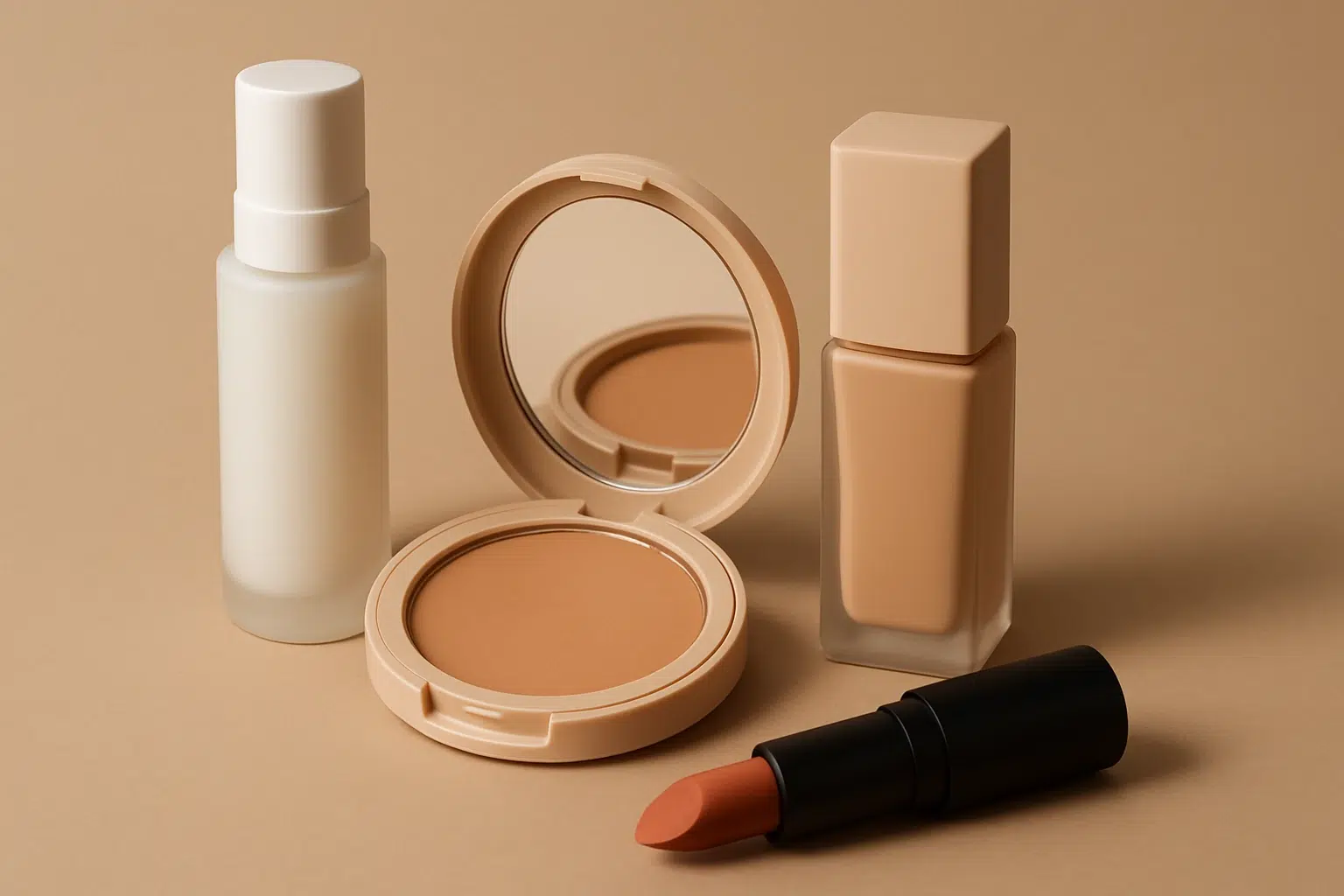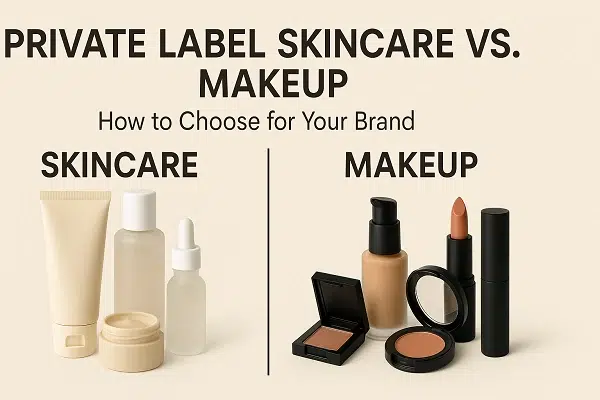Cruelty-free makeup refers to cosmetic products and formulations that have not been tested on animals at any stage of their development, including the ingredients used. This designation ensures that no animal testing was conducted during the production, formulation, or testing phases of the cosmetics’ creation.
Brands that label their products as cruelty-free often use alternative testing methods, such as in vitro testing or testing on human volunteers, to ensure safety and efficacy without involving animals. The cruelty-free designation reflects a commitment by companies to ethical practices that prioritize animal welfare and advocate against the use of animals for cosmetic testing purposes.

Table of Contents
Importance of Cruelty-free Products in the Cosmetics Industry
Ethical Standards: Cruelty-free products align with ethical principles by advocating for the well-being of animals. These products reflect a commitment to treating animals ethically and avoiding any harm or suffering inflicted during the testing or manufacturing of cosmetics.
Consumer Preferences: There is a growing consumer demand for ethical and sustainable products. Many individuals prefer cruelty-free cosmetics as they become more conscious of the impact of their purchasing choices. Consumers are increasingly supporting brands that demonstrate a commitment to cruelty-free practices.
Global Regulations and Changing Standards: Several countries and regions have introduced or are considering legislation to ban or limit animal testing in cosmetics. In response, many cosmetic companies are adapting their practices to comply with these evolving regulations and consumer expectations.
Environmental and Health Considerations: Cruelty-free cosmetics often embrace more environmentally friendly practices. Companies that avoid animal testing may also prioritize using safer, non-toxic ingredients that are beneficial for both consumers and the environment.
Positive Brand Image and Marketing Advantage: Embracing cruelty-free practices can enhance a brand’s reputation and appeal to a broader market segment. Companies that are committed to cruelty-free products may gain a competitive advantage by appealing to consumers who prioritize ethical values.

Innovation and Research: The push for cruelty-free cosmetics encourages the development of alternative testing methods. This drive for innovation fosters the creation of new, reliable testing techniques that don’t rely on animal subjects, contributing to advancements in scientific research.
Understanding Cruelty-free
Distinguishing between cruelty-free and animal testing in the cosmetics industry is crucial as it highlights the ethical and moral stance of brands regarding animal welfare. Here are the key differences:
Cruelty-Free: Products labeled as “cruelty-free” signify that no animal testing was conducted at any stage of production, including ingredients, formulations, and finished products. Brands committed to cruelty-free practices employ alternative testing methods, such as in vitro tests, computer modeling, or human volunteers, to ensure product safety without using animals.
Animal Testing: This refers to the practice of testing cosmetic products or ingredients on animals to assess safety, efficacy, or potential adverse effects. Animals like rabbits, mice, rats, and guinea pigs are commonly used in these tests. Traditional animal testing involves subjecting animals to potentially harmful substances, which can cause pain, suffering, and even death.
Key points for differentiation include:
Methods Used: Cruelty-free brands utilize non-animal testing methods, while animal testing involves experiments on live animals.
Ethical Consideration: Cruelty-free signifies a commitment to ethical standards and avoiding harm to animals, whereas animal testing raises ethical concerns due to the suffering inflicted on animals.
Transparency: Cruelty-free brands often display certifications or labels indicating their stance against animal testing, while products that have undergone animal testing usually don’t carry such labels.
Global Regulations: Cruelty-free practices align with regulations in some regions that prohibit or restrict animal testing in cosmetics. In contrast, animal testing may still be practiced in certain regions or by some companies despite evolving regulations.
History of Animal Testing in Cosmetics
The history of animal testing in the cosmetics industry has witnessed a significant evolution over time. Initially, animal testing was extensively utilized to assess the safety and effectiveness of cosmetic products. Companies relied on experiments involving animals such as rabbits, mice, guinea pigs, and rats to determine potential skin irritation, eye damage, and toxicity caused by cosmetic ingredients. This approach was considered standard practice for many decades.

However, in recent years, there has been a noticeable shift towards embracing cruelty-free alternatives in the cosmetics industry. This transformation reflects a growing ethical consciousness among consumers and companies alike. Brands are increasingly exploring innovative, non-animal testing methods to evaluate product safety.
In vitro testing, computer simulations, and utilizing human cell cultures have emerged as effective alternatives. These methods not only eliminate the need for animal testing but also offer more accurate and reliable results.
The transition towards cruelty-free practices has been influenced by legal regulations and global initiatives aiming to reduce or eliminate animal testing in cosmetics. Several countries and regions have introduced stringent regulations, prohibiting or restricting the use of animal testing for cosmetic products.
Organizations and initiatives dedicated to animal welfare and ethical treatment have played a pivotal role in advocating for the implementation of such regulations worldwide. This has prompted many cosmetic companies to reevaluate their testing practices and embrace cruelty-free alternatives in compliance with these evolving legal frameworks.
This progressive shift signifies a promising trajectory for the cosmetics industry, emphasizing a commitment to ethical practices while ensuring the safety and innovation of cosmetic products.
Benefits of Using Cruelty-free Makeup
Ethical Considerations and Moral Implications: Opting for cruelty-free makeup aligns with ethical principles, reflecting a commitment to animal welfare. By choosing products that haven’t been tested on animals, consumers support the ethical treatment of animals and oppose practices that inflict unnecessary harm or suffering. This choice resonates with individuals seeking to make a positive impact by endorsing compassionate and humane practices in the cosmetics industry.
Quality and Safety of Cruelty-free Products: Contrary to misconceptions, cruelty-free makeup often maintains high standards of quality and safety. Brands committed to cruelty-free practices invest in innovative research and alternative testing methods, ensuring their products meet rigorous safety standards. Additionally, these products often contain natural, non-toxic, and sustainable ingredients, promoting healthier choices for consumers.
Environmental Impact: Opting for cruelty-free makeup can contribute to a more environmentally sustainable beauty industry. Cruelty-free brands tend to emphasize eco-friendly practices, utilizing sustainable sourcing, reducing waste, and adopting cruelty-free packaging. Furthermore, by avoiding animal testing, these brands lessen their environmental footprint by refraining from the negative impact associated with animal research facilities and animal-derived ingredients.
Challenges and Misconceptions
Challenges Faced by Companies in Adopting Cruelty-free Practices: Transitioning to cruelty-free practices poses several challenges for cosmetic companies. One major hurdle is the need to develop and validate alternative testing methods that meet regulatory standards while ensuring the safety and efficacy of their products.
Additionally, companies might face logistical challenges and increased costs when shifting away from traditional animal testing, requiring investment in research, technology, and training. Moreover, sourcing cruelty-free raw materials and finding reliable suppliers that adhere to these standards can present significant challenges in maintaining consistency and quality across product lines.

Common Misconceptions about Cruelty-free Products: There exist several misconceptions surrounding cruelty-free products that contribute to consumer confusion. One common misconception is that cruelty-free products are less effective or of lower quality compared to those tested on animals.
However, this is often not the case, as many cruelty-free brands invest in advanced testing methods and prioritize safety and quality in product development. Another misconception is assuming that all products labeled “cruelty-free” are entirely free from animal-derived ingredients.
While these products avoid animal testing, some might still contain certain animal-derived components, necessitating careful scrutiny of ingredients for consumers adhering to vegan preferences.
How to Identify Cruelty-free Makeup
A. Researching Brands and Their Policies: Conducting thorough research on brands and their animal testing policies is crucial in identifying cruelty-free makeup. Visit brand websites, review their official statements, and contact them directly if needed.
Look for transparency regarding their stance on animal testing throughout their supply chain, including ingredients and finished products. Additionally, explore independent sources, blogs, or forums that provide insights and reviews on brands’ cruelty-free status based on verified information.

B. Recognizing Cruelty-free Labels and Certifications: Cruelty-free labels and certifications are valuable indicators of a brand’s commitment to avoiding animal testing. Look for logos from reputable organizations such as Leaping Bunny, PETA’s Beauty Without Bunnies, or the Choose Cruelty-Free accreditation.
These labels signify that the brand adheres to strict cruelty-free standards and doesn’t test on animals. However, be cautious of misleading or deceptive labels and certifications and ensure they are from credible and recognized certifying bodies.
C. Reliable Resources for Information: Several reliable resources provide comprehensive information on cruelty-free brands and their products. Websites, apps, or databases dedicated to cruelty-free beauty can serve as valuable references.
They often compile updated lists of brands that don’t test on animals, offer guidance on identifying cruelty-free products, and provide insights into companies’ cruelty-free status. Additionally, following cruelty-free advocates, influencers, or organizations on social media platforms can offer valuable updates and insights on ethical beauty choices.
Conclusion
Cruelty-free makeup embodies ethics, urging an ethical beauty shift. Consumer choices drive industry change, advocating against animal testing. Opting for cruelty-free products empowers ethical standards, contributing to a compassionate beauty industry focused on responsible practices.







